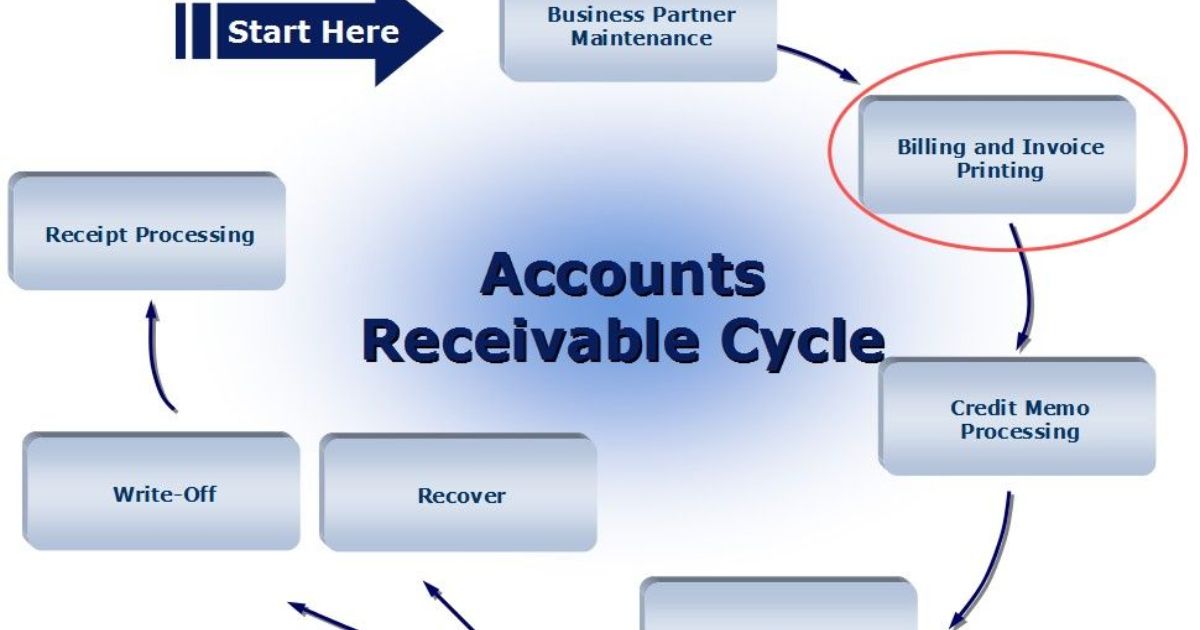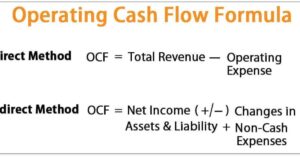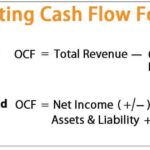Cash flow is the lifeblood of any business, and understanding the role of accounts receivable (AR) in cash flow is essential for maintaining financial health. Accounts receivable represent the money owed to a business by its customers for products or services that have been delivered but not yet paid for.
Managing AR effectively can make or break a company’s cash flow, influencing its ability to pay bills, invest in growth, and remain solvent. This article delves into how accounts receivable affect cash flow, the implications of negative AR on cash flow statements, and how AR is reflected in financial reporting.
How Do Accounts Receivable Affect Cash Flow?
The impact of accounts receivable on cash flow is profound. The accounts receivable process begins when a company delivers a product or service and issues an invoice to the customer.
The amount owed is recorded as an asset on the balance sheet. However, until the customer pays, that asset does not translate into actual cash. This delay can strain cash flow, especially if the company has pressing financial obligations, such as payroll, rent, or supplier payments.
The timing of payments is crucial. If customers take too long to settle their invoices, it can lead to cash flow problems, even if the company is profitable on paper. The key to maintaining healthy cash flow lies in shortening the time between issuing an invoice and receiving payment.
Implementing efficient collection strategies, offering incentives for early payments, and establishing clear payment terms are some of the ways businesses can ensure that accounts receivable contribute positively to cash flow.
What Does It Mean If Accounts Receivable Is Negative on a Cash Flow Statement?
Negative accounts receivable on a cash flow statement can be alarming, but it doesn’t always signify a problem. In some cases, negative AR indicates that the company has collected more cash than it expected during the accounting period. This situation might occur if customers pay their invoices more quickly than anticipated or if the company received advance payments.
However, negative AR can also signal issues, such as inaccurate financial reporting or difficulties in collecting payments. If accounts receivable are consistently negative, it could reflect poor customer payment behavior or ineffective credit policies.
Regular monitoring and auditing of accounts receivable are necessary to ensure that the numbers accurately represent the company’s financial situation and to prevent potential cash flow problems.
What Is the Main Function of Accounts Receivable?
 The main function of accounts receivable is to track and manage the money owed to a business by its customers. It serves as a record of credit sales and ensures that the company can monitor and follow up on unpaid invoices. Efficient management of accounts receivable helps businesses maintain a steady flow of income by ensuring that payments are received on time.
The main function of accounts receivable is to track and manage the money owed to a business by its customers. It serves as a record of credit sales and ensures that the company can monitor and follow up on unpaid invoices. Efficient management of accounts receivable helps businesses maintain a steady flow of income by ensuring that payments are received on time.
Moreover, accounts receivable also play a critical role in customer relationship management. By offering credit terms to customers, businesses can attract and retain clients who may not have the ability to pay upfront.
This requires a careful balance, as extending too much credit or failing to collect payments on time can harm cash flow and profitability. Effective AR management ensures that customers are satisfied while keeping the company’s financial health in check.
How Will the Change in Accounts Receivable Be Shown on the Statement of Cash Flows?
Changes in accounts receivable are reflected in the operating activities section of the statement of cash flows. When accounts receivable increase, it indicates that the company has made more sales on credit but has not yet collected the corresponding cash. This increase is considered a use of cash, as it represents money that is tied up and unavailable for other purposes.
Conversely, a decrease in accounts receivable indicates that the company has successfully collected cash from its customers. This reduction is considered a source of cash, as it reflects incoming funds that can be used for various operational needs.
Monitoring the changes in AR on the cash flow statement provides valuable insights into how well a company is managing its receivables and whether it is effectively converting sales into cash.
Importance of Timely Collection in Cash Flow Management
The timely collection of accounts receivable is critical for maintaining a healthy cash flow. Delayed payments can lead to cash flow gaps, forcing businesses to rely on external financing, such as loans or credit lines, to cover operational expenses. This reliance on borrowing can increase the company’s financial risk and lead to higher interest costs.
Implementing a robust accounts receivable management system can help ensure timely collections. This system may include setting clear payment terms, sending regular payment reminders, and offering discounts for early payments.
Businesses can also leverage technology, such as automated invoicing and payment systems, to streamline the collection process and reduce the likelihood of late payments.
The Role of Credit Policies in Managing Cash Flow
Credit policies play a vital role in managing accounts receivable and cash flow. By establishing clear credit policies, businesses can minimize the risk of non-payment and ensure that they are extending credit only to reliable customers.
A well-defined credit policy outlines the terms and conditions for credit sales, including payment deadlines, interest charges for late payments, and the process for handling delinquent accounts.
Effective credit policies help businesses strike a balance between offering credit to attract customers and maintaining a healthy cash flow. Regularly reviewing and updating credit policies can also ensure that they remain aligned with the company’s financial goals and the changing economic environment.
Strategies for Improving Accounts Receivable Turnover
Accounts receivable turnover is a key metric that measures how quickly a company collects payments from its customers. A high turnover ratio indicates that the company is efficient in collecting its receivables, while a low ratio suggests that the company may be struggling with delayed payments.
To improve accounts receivable turnover, businesses can implement several strategies. These include offering discounts for early payments, enforcing strict payment terms, and following up promptly on overdue invoices. Additionally, businesses can perform credit checks on new customers to assess their ability to pay and avoid extending credit to high-risk clients.
Impact of Accounts Receivable on Working Capital
Accounts receivable directly impact a company’s working capital, which is the difference between its current assets and current liabilities. Since accounts receivable are considered current assets, any changes in AR can affect the company’s working capital. An increase in accounts receivable may lead to a decrease in working capital, as the company has less cash available to meet its short-term obligations.
Maintaining a healthy level of working capital is crucial for ensuring that the business can operate smoothly and meet its financial commitments. Efficient management of accounts receivable helps maintain an optimal level of working capital by ensuring that cash flows into the business in a timely manner.
How to Manage Delinquent Accounts and Their Impact on Cash Flow
Delinquent accounts, or unpaid invoices that are past due, can have a significant impact on cash flow. When customers fail to pay on time, it creates cash flow gaps that can disrupt business operations. Managing delinquent accounts effectively is essential for minimizing the impact on cash flow.
Businesses can implement a range of strategies to manage delinquent accounts, including sending regular payment reminders, negotiating payment plans with customers, and charging late fees.
In more severe cases, businesses may need to involve collection agencies or take legal action to recover unpaid debts. Proactive management of delinquent accounts helps ensure that they do not become a long-term drain on cash flow.
The Relationship Between Accounts Receivable and Profitability
 While accounts receivable represent potential future cash, they do not contribute to profitability until the cash is actually collected. High levels of accounts receivable can create the illusion of profitability on the income statement, but if those receivables are not collected, the company may struggle with cash flow problems.
While accounts receivable represent potential future cash, they do not contribute to profitability until the cash is actually collected. High levels of accounts receivable can create the illusion of profitability on the income statement, but if those receivables are not collected, the company may struggle with cash flow problems.
To ensure that accounts receivable contribute to both profitability and cash flow, businesses must prioritize timely collections. Monitoring the aging of accounts receivable, or the length of time invoices have been outstanding, can help businesses identify potential problems early and take corrective action to improve cash flow and profitability.
How Technology Is Transforming Accounts Receivable Management
Technology is playing an increasingly important role in transforming accounts receivable management. Automated invoicing systems, online payment platforms, and AI-powered credit risk assessments are just a few of the tools that businesses can use to streamline their AR processes and improve cash flow.
These technologies help reduce manual errors, speed up the invoicing and payment process, and provide real-time insights into the status of receivables. By leveraging technology, businesses can enhance their accounts receivable management, reduce the time it takes to collect payments, and ultimately improve their cash flow.
Best Practices for Accounts Receivable Reconciliation
Regular reconciliation of accounts receivable is essential for ensuring that the company’s financial records accurately reflect its cash flow situation. Reconciliation involves comparing the company’s AR records with the payments received to identify any discrepancies or errors.
Best practices for AR reconciliation include conducting regular reviews, maintaining detailed records of all transactions, and promptly addressing any issues that arise. Accurate reconciliation helps businesses maintain a clear understanding of their cash flow and ensures that they can identify and resolve potential problems before they escalate.
The Role of Accounts Receivable in Financial Forecasting
Accounts receivable play a crucial role in financial forecasting, as they provide insights into the company’s expected cash flow. By analyzing historical AR data, businesses can forecast future cash inflows and plan accordingly for expenses, investments, and other financial commitments.
Accurate financial forecasting requires a deep understanding of the company’s AR trends, including the average time it takes to collect payments and the impact of seasonal fluctuations on cash flow.
Businesses that incorporate accounts receivable into their financial forecasts are better equipped to manage cash flow and make informed decisions about growth and investment.
Frequently Asked Questions
1. What is the difference between accounts receivable and cash flow?
Accounts receivable represent money owed to the business by customers, while cash flow refers to the actual cash moving in and out of the business. AR affects cash flow by influencing when the company receives cash from its sales.
2. Can a business have positive profitability but negative cash flow due to accounts receivable?
Yes, a business can show a profit on paper but experience negative cash flow if its accounts receivable are high, and it has not yet collected cash from its sales.
3. How do accounts receivable impact working capital?
Accounts receivable are considered current assets and therefore contribute to working capital. An increase in AR can reduce working capital if the company has less cash available to cover its liabilities.
4. How can businesses improve their accounts receivable turnover?
Businesses can improve their AR turnover by offering early payment incentives, enforcing strict payment terms, and promptly following up on overdue invoices.
Conclusion
The role of accounts receivable in cash flow cannot be overstated. By managing AR effectively, businesses can ensure a steady flow of cash, minimize the risk of cash flow problems, and maintain financial stability.
Implementing strong credit policies, leveraging technology, and prioritizing timely collections are key strategies for optimizing accounts receivable management. Ultimately, businesses that take a proactive approach to managing their AR will be better positioned to achieve long-term success and profitability.

Milton is a seasoned financial strategist who shares expert insights and practical tips on mastering cash flow to help you achieve financial stability and growth.











